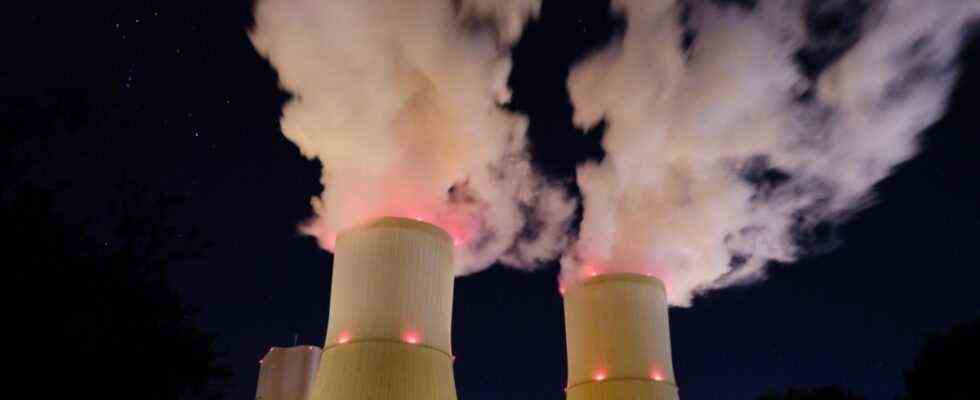March 15, 2022 will definitely not be the best day of the new climate minister’s term in office. By then at the latest, according to the law, Robert Habeck (Greens) will have the carbon footprint for 2021 in his hands. And it’s going to be pretty modest.
At least that is suggested by the figures presented by the Working Group on Energy Balances (Ageb) on Tuesday. Accordingly, the hunger for energy has risen significantly again in the year after the worst corona crisis. And it was mainly fed with fossil, climate-damaging energy. The use of lignite and hard coal grew by 18 percent each – while renewable energies almost stagnated. It is true that solar power and hydropower each increased by five percent. But there was often a lull in onshore wind power, and its output shrank by eleven percent.
All of this has left its mark on the German climate footprint. Last year it was good – due to corona – and greenhouse gas emissions fell to 739 million tons. That was 40.8 percent less than in 1990, the first time a federal government achieved its official climate target: minus 40 percent. But in 2021, according to data from the Ageb, energy-related emissions will be 25 million tonnes higher. Greenhouse gas emissions from agriculture and the waste sector are also included in the balance sheet, but energy emissions are the dominant factor. Which means: On March 15th, the new climate minister is faced with a violent missed target. Even the climate target for 2020 will be missed. According to the Ageb figures, Germany has a 38.9 percent reduction compared to 1990.
A “poisoned farewell present” from the previous government
The new coalition can’t help it, it’s fresh in office. She still has to announce the bad news. It is about the “poisoned farewell gift” from the grand coalition, says Greenpeace energy expert Andree Böhling. “Even if the traffic light government didn’t get this hangover on itself, it now needs a recipe for it very quickly.” What is needed, for example, is an upper limit for dirty coal electricity.
Its growth also highlights the electricity market. After all, the coal boom was triggered not least by the high gas price. As a result, gas became less attractive as a power supply, while climate-damaging coal became competitive again. The high prices for emission certificates did little to change that. Anyone who causes a ton of carbon dioxide in Europe’s power plants or factories must purchase an EU emissions certificate. Their price rose – in line with the development on the gas market – from a good 30 euros at the beginning of the year to 80 euros most recently. If natural gas consumption grew by almost four percent in the past year, it was mainly because of the cool weather last winter. Gas wasn’t that expensive then.
Elsewhere, on the other hand, the high energy prices are likely to distort the statistics: for heating oil. Because of the recent high oil prices, many households have refrained from filling their tanks. Sales fell by 27 percent here. However, the tanks also want to be filled again at some point, if it really has to be an oil heater. In turn, the lockdowns continue to make themselves felt in road traffic. Diesel sales fell by one percent, Otto gasoline only increased by 0.6 percent – even compared to the fuel-efficient year 2020. Only air traffic took off: after the standstill in 2020, kerosene sales grew by 22 percent. The year before it had halved.
The climate law regulates exactly what has to happen after March 15th. “Immediate programs” are then needed in all areas that fail to meet their climate targets, by mid-July at the latest. A lot of work for the climate minister – because the climate target is moving: It is getting stricter from year to year.

